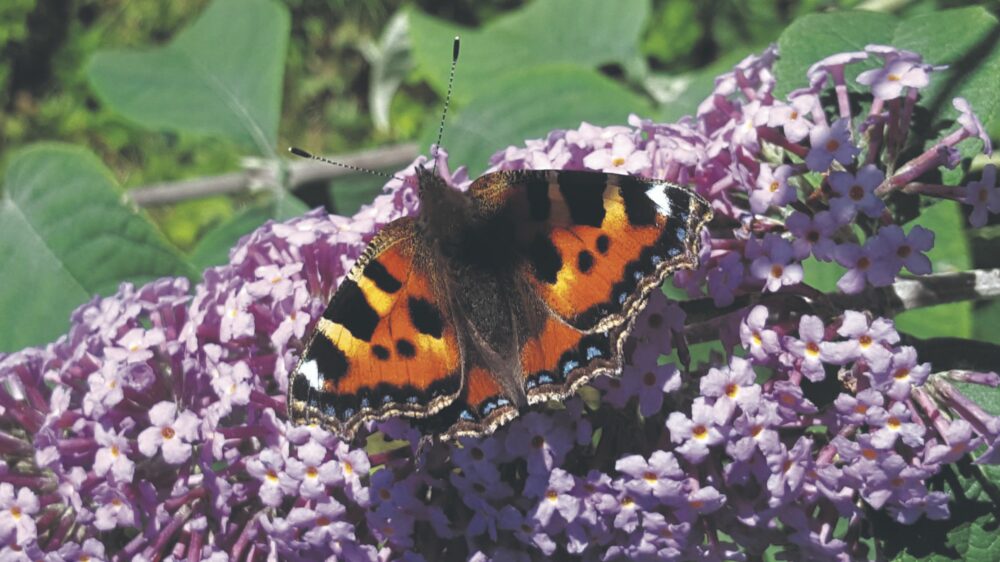

Nature on our doorsteps: Butterflies from Africa
Rosaleen Dwyer is the County Heritage Officer at South Dublin County Council – every week she gives us an insight into the natural heritage around us and the beautiful biodiversity of the plants and creatures.
TWO OF THE orange-brown butterflies visible in August are the Small Tortoiseshell and the Painted Lady.
The Small Tortoiseshell is one of our most common, resident, native butterflies. Its name reflects the mix of brown, orange, and yellow that occurs on its wings, which are like the colours on the shell of a tortoise.
The sides of its wings are delicately scalloped, and there are also small blue spots all along the edges. With newly hatched adults, these spots are vibrant and are clearly seen.
As the insect ages, however, the blue colour fades and the spots are not so instantly visible. The Small Tortoiseshell hibernates over winter as an adult, when it can be discovered hiding away in sheds or even behind the curtains in cooler rooms of the house.
The Painted Lady butterfly also has a mix of browns and yellows on its wings, but the tips of its front wings have a large black and white patch, distinguishing it from the Small Tortoiseshell.
Also, the Painted Lady does not have blue spots along the edges of its wings. The Painted Lady is a summertime visitor to Ireland. Its journey begins in March in North Africa, in the Atlas Mountains, from where thousands of adult butterflies begin their annual migration northwards.
Flying high over mountains, desert, and the Mediterranean sea, their first stop is in Spain where they rest and they refuel on nectar-rich springtime flowers. Some stay and breed in Spain, but most continue migrating northwards and eastwards across Europe.
Depending on weather conditions, Painted Ladies begin to appear in Ireland in May or June. On arriving, they mate and lay their eggs on Nettles and Thistles. The adults that mature from this brood then feed intensely before travelling all the way back southwards to North Africa again.
Providing nectar-rich flowers in our gardens and parks will help support both of these butterfly species to prepare for what lies ahead for them, either an Irish winter hibernation or a long, 2,500km journey back to Africa.

